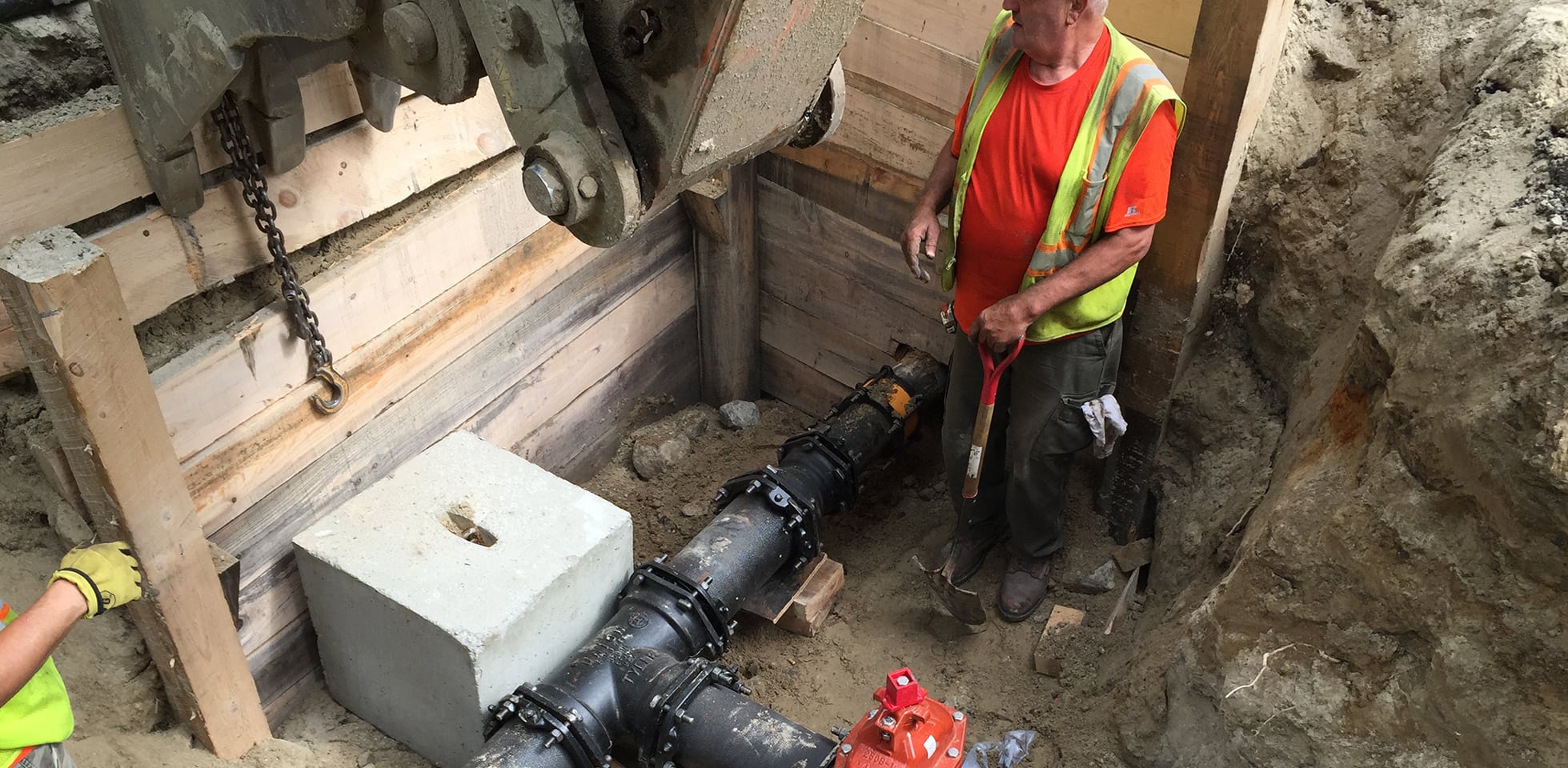Water System Improvements
Putnam, Connecticut

BETA was hired to provide planning, design and construction services to improve and upgrade the Town of Putnam’s potable water system, assist the Town in obtaining funding for the projects and to provide asset management services to insure the efficient operation and maintenance of the water distribution system. The Town of Putnam received the from the State of Connecticut’s Department of Health Drinking Water Section the 2016 Small Community Public Health Drinking Water Merit Award for outstanding contributions to the field of drinking water in the area of water operations and administration. Working closely with the Water Pollution Control Authority (WPCA) and the Public Works Department (PWD), BETA has accomplished the following:
PLANNING SERVICES
Funding
BETA assisted the Town in securing a $15.4 million financial assistance package through the United States Department of Agriculture (USDA) Rural Development Program and the State of Connecticut Drinking Water State Revolving Fund (DWSRF). The financial assistance package included a $4.8 million grant and $10.6 low interest loan. This was unique in that BETA was able to obtain two sources of funding for the project, maximizing the benefits of each funding source.
Asset Management Program and Infrastructure Mapping
A key component of the initial effort was the mapping of the water system and the implementation of a Water Asset Management Program (WAMP). Over the course of developing the WAMP, the Town recognized that it would be better served to expand its infrastructure database into a comprehensive Asset Management System (AMS) and Town-wide GIS Program. BETA worked with the Town to leverage available funding to that end, implementing its user-friendly AMS to develop the Town’s Pavement Management Program, Sign Management Program, Sidewalk Inventory and mapping of the Water, Storm water and Wastewater System networks. BETA coordinated with key Town staff to develop and implement a multi-faceted action plan to meet the Town’s GIS needs.
Water Distribution System Modeling
As the water system improvements were being designed, the system was modeled using Bentley WaterGEMS V8i software to identify future areas for improvement and to show the positive effects that proposed improvements have on system hydraulics. Replacing existing tuberculated water mains and undersized lines, as well as looping the system to eliminate numerous dead ends were shown to significantly improve both system performance and fire flow protection throughout the system.
Update Water Records Storage
To enhance the Town’s AMS and GIS program further, BETA provided record card and plan scanning and cataloging services for both the wastewater and water systems. The scanned information as well as pdf maps of the Water, Storm water and Wastewater infrastructure can now be viewed by Town staff on the computer network or in the field via tablets.
DESIGN AND CONSTRUCTION OBSERVATION SERVICES
Water Main Replacement and Rehabilitation
BETA provided planning, design and construction observation services for major water infrastructure improvements throughout the Town. A large percentage of the water infrastructure is original to the system, installed between 60 and 100 years ago. This work is being completed under two separate design and construction contracts. The first contract consisted of replacement/rehabilitation of approximately 16,000 linear feet of 6”-12” of water main, replacement of all gate valves, fire hydrants and water services. This work was completed on time in the fall of 2016 and approximately $130,000 under the original Contract bid price. The second Contract consists of the replacement of approximately 44,000 linear feet of 6”-16” cast iron water main with new 8”-16” cement-lined ductile iron waster main, water services and appurtenances. The project commenced in the fall 0f 2016 and it is anticipated to be completed in the fall of 2018.
BETA performed an extensive Preliminary Environmental Assessment (PESA) for both construction contracts to evaluate the presence of contaminants in soil and groundwater and their potential for affecting construction activities Completed soil borings indicated that polluted and/or contaminated soil would be encountered in the approximately 90 percent of the project limits. To limit financial impacts BETA recommended that only surplus soils be removed and disposed of and that the Contractor screen all soil to minimize the disposal volume of polluted and contaminated soil. These recommendations saved the Town approximately $200,000 in disposal fees for Contract #1. Similar savings are expected for Contract #2.
Success of project required coordination with local business groups, hospital, police and fire departments, along with numerous utilities and regulatory authorities including, utility owners, Connecticut Department of Transportation (DOT), Providence and Worcester Railroad, Connecticut Department of Public Health (DPH), Connecticut Department of Energy and Environmental Protection (DEEP) and the USDA.
Water Storage Tank Rehabilitation
The Town has found it difficult to maintain chlorine residual at the water storage tank as a result of thermal stratification within the tank. Inadequate mixing and water turnover causes chlorine depletion in the upper zone of the tank. The entrance of the inlet/outlet pipe is located at the bottom of the tank. As a result, the water tank is filled and emptied from the bottom layer of the stored water with little to no mixing occurring within the tank.
To resolve the problem, BETA designed a passive mixing system to resolve the issue of thermal stratification and consequently improve water quality by making it easier to maintain the proper chlorine residual. Other water storage tank improvements included a new altitude valve and tank level components.
